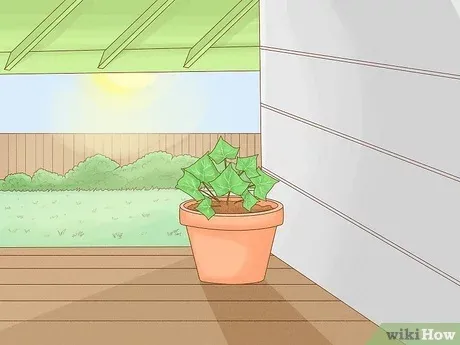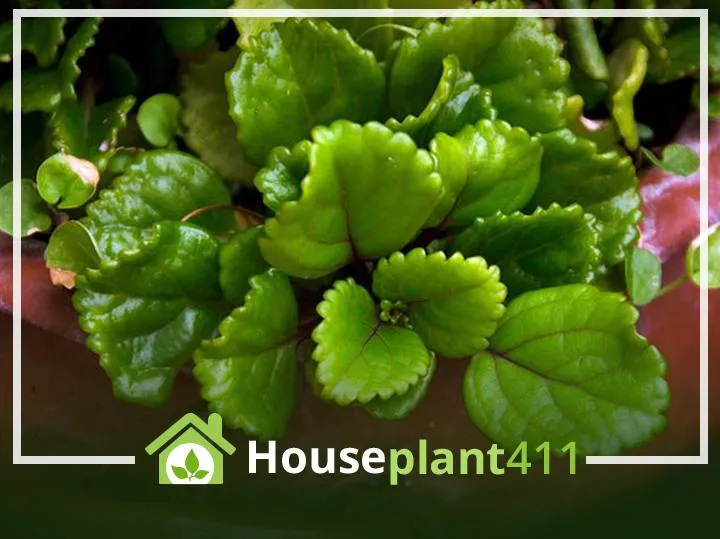A Complete Guide to Planting Ivy Indoors
Whether you want to add some greenery to your home or simply grow something that’s low maintenance, indoor ivy is a great option. As one of the most popular houseplants, ivy comes in many varieties that thrive in indoor conditions. However, successfully planting ivy inside does require some know-how. In this article, I’ll cover all the basics of growing ivy indoors, from variety selection to care tips. By the end, you’ll have the knowledge needed to get your ivy off to a healthy start.
Choosing an Ivy Variety
- English ivy (Hedera helix) – The most common type, it has glossy green leaves and grows well in low or bright light. Just be careful not to overwater as it can cause root rot.
- Swiss cheese plant (Monstera deliciosa) – Not technically an ivy but shares similar vining growth. Its large, tropical leaves add lots of appeal. Prefers medium to bright light.
- Swedish ivy (Plectranthus verticillatus) – Good for low-light areas, it has thick green leaves edged in white. It only needs water when the soil is dry an inch down.
- Needlepoint ivy (Hedera helix ‘Needlepoint’) – Sporting small, rounded leaves, this variety looks great cascading over shelves or windowsills. Give it bright, indirect sunlight.
- Frosty Ceylon ivy (Hedera helix ‘Frosti’) – As the name implies, its leaves have a lovely white border. Be cautious not to overwater though, as the white edges are prone to rot.
From my experience, English ivy and Swedish ivy are two of the hardiest and easiest to care for varieties for beginners. Choose one based on your specific light conditions. And be sure to inspect the plant closely for any signs of pests before purchasing.
Choosing a Pot and Soil
Ivy can be grown in a variety of containers, from simple terra cotta pots to woven hanging baskets. When selecting a pot, go with something that has good drainage holes to prevent overwatering issues. As for soil, an indoor potting mix specifically formulated for houseplants works best. It should retain moisture without staying soggy. I also like to mix in some perlite or orchid bark to improve drainage. Avoid using regular garden soil, which often compacts and doesn’t dry out quickly enough indoors.
Planting and Initial Care
When first bringing your ivy home, give it a few days to adjust before watering. Then follow these steps:

- Fill your clean pot with well-draining potting soil.
- Remove the ivy plant from its nursery pot and gently tease apart its roots if they’ve become pot bound.
- Settle the plant in place and backfill soil around it, firmly pressing down as you go.
- Water well until water drains freely from the bottom, ensuring the whole root ball is moistened.
- Place in a spot receiving indirect or low light based on the variety’s needs.
- Resist watering again until the top inch of soil is dry. Ivy likes to dry out between waterings.
The key at first is ensuring your ivy gets the right conditions to establish itself. Avoid putting it in direct sun, which can scorch new leaves. And don’t let it dry out completely either, as that can shock the plant. With some TLC, your ivy should start growing and climbing in no time!
Light and Temperature Requirements
Light is crucial for healthy ivy growth. Most varieties will do fine in medium to low light, around 400-1000 foot-candles. However, some—like Swiss cheese plant—need brighter conditions to prevent leggy vines. As a rule of thumb, east or north-facing windows provide the perfect indirect light. Direct hot afternoon sun could cause leaf scorching, especially for more delicate varieties. Temperature-wise, most houseplants prefer daytime highs between 65-80°F. At night, temperatures no lower than 50-60°F are suitable. Pay attention to any dramatic shifts that could stress your ivy. Maintaining consistent conditions prevents problems.
Watering and Humidity Needs
As I mentioned earlier, the key with ivy is to water judiciously when the soil is dry. Remember that terra cotta pots dry out faster than glazed ceramic ones. In warmer months, check the soil every five to seven days. It’s better to water thoroughly each time until water comes from the drainage holes, rather than misting frequently. You’ll know it’s time when the top inch or two of soil becomes lightly dry to the touch. For humidity-loving varieties like English ivy, misting the leaves occasionally can help. Placing the pot on a pebble tray filled with water also boosts ambient moisture. During winter dormancy, cut back watering to every two to three weeks.
Fertilizing and Pruning Tips
Feed your ivy every few months in the spring and summer using a diluted liquid houseplant fertilizer. Apply according to label instructions. At other times, foliar sprays containing vitamins and minerals provide a boost. When vines get leggy over time, pruning helps your ivy bush back out. Simply snip off long sections back to a leaf node using clean pruners. You can also train the vines to grow where you want them along trellises or wires for decorative appeal. To encourage branching, remove flower and seed clusters as they appear. Proper fertilizing and pruning will keep your ivy looking its best indoors for years.

Pest and Disease Problems
Most indoor variety pests typically avoid hearty plants like ivy. However, some potential issues include:
- Spider mites – Tiny spider-like bugs that cause stippling on leaves. Wipe down monthly with a damp cloth.
- Mealybugs – Fluffy white insects hiding in crevices. Rub off with alcohol on a Q-tip. Isolate from other plants.
- Scale – Hard, bumpy shells attached to leaves and stems. Scrape off carefully with a fingernail.
- Root rot – From overwatering, it causes mushy brown roots. Improve drainage and check for soggy soil.
- Leaf spots – Dark lesions from bacteria, usually due to poor air circulation. Increase space between plants.
With regular inspections and preventative care, you can head off most issues before they become major problems. At the first sign of pests, swiftly isolate your ivy and treat as needed with an appropriate organic remedy. Pruning away diseased foliage also curtails spread.
Overall, ivy makes a nearly foolproof option for individuals new to keeping houseplants. Although it takes some nourishment to thrive, it’s quite tolerant of normal care variations. From my experience, just be sure not to overwater or underwater, and give the plant conditions suited to its specific type. With those simple keys, your ivy will surely bring its beautiful greenery indoors for many years to come! Let me know if you have any other questions as you get started.
Indoor Ivy Planting Tips
| Ivy Type | Light Requirements | Water Needs | Soil Type |
|---|---|---|---|
| English Ivy | Bright indirect light | Allow soil to dry out between waterings | Well-draining potting soil |
| Swedish Ivy | Low to medium light | Water when top inch of soil is dry | Rich, well-draining potting soil |
| Needlepoint Ivy | Medium to bright light | Water when top inch of soil is dry | Well-draining potting soil |
| Cast Iron Plant | Bright indirect light | Allow soil to dry slightly between waterings | Rich, well-draining potting soil |
| Purple Wintercreeper | Bright light | Water when top inch of soil is dry | Rich, well-draining potting soil |
FAQ
-
Can ivy be grown indoors?
Absolutely! Ivy can basically thrive indoors if it gets the right care.

-
What kind of ivy works well for indoor growing?
English ivy is sort of the best choice for indoors. It tolerates low light and doesn’t need a ton of water.
-
What kind of light does ivy need inside?
Ivy does OK in medium to low light. It grows amazingly under grow lights or in a spot that gets indirect sunlight for part of the day. On the other hand, direct sun may scorch the leaves.
-
How often should indoor ivy be watered?
Water indoor ivy when the top inch or two inch of soil become dry. During winter, cut back to watering only once every couple weeks. Or does that seem too unclear? Please let me know if you have any other watering questions!
-
What kind of potting mix is best?
A well-draining potting soil works well. You want one that isn’t too rich in nutrients, or the plant may grow more like a weed! Perhaps add some perlite or gravel to the mix for better drainage.

-
How do I get my indoor ivy to vine?
Train ivy onto a moss pole or let it cascade over the pot by gently guiding the stems. Give it something to climb and it will eventually vine on its own. But is it worth the effort if you have cats or kids who might eat the plants?
-
What common problems can indoor ivy have?
Mealybugs and spider mites sometimes bug indoor ivy. Check closely and isolate any infested plants as these pests can totally ruin your whole collection. Yellow or brown leaf spots may mean the soil stays too wet so improve drainage. And don’t forget to fertilize in spring and summer!
